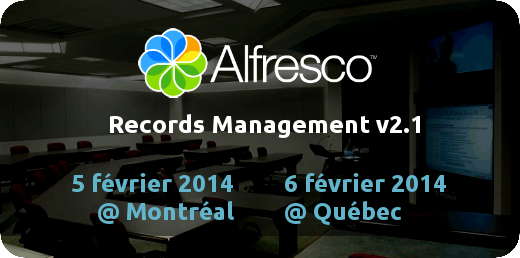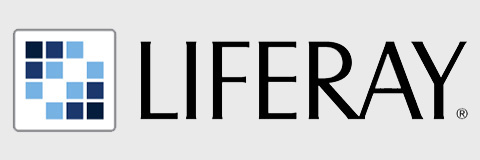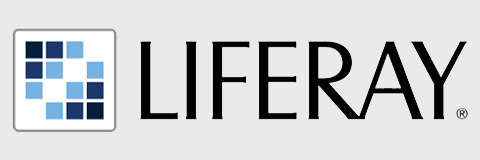
Alfresco draws from a very large development community which allows it to offer a mature, feature rich and dynamic open source document management and collaboration platform. It is also one of the few that currently offer advanced electronic archiving functions natively.
On February 5 (Montreal) and 6th (Quebec City) Yannick Richard, Open Source EDM[1] Team leader at Savoir-faire Linux, will showcase examples of how the Alfresco Records Managements (RM)[2] v.2.1 Module can meet the practical information governance and compliance needs of Québec Ministries and public entities.
Alfresco is based on open standards which ensure its evolution and so it can be deployed on any system — Windows, Linux, etc. — and be used securely in most web browsers and mobile devices. Its new records management module ensures compliance of an impressive number of media types from traditional office documents to multimedia files, scanned images and team folders.
The RM 2.1 module is perfectly integrated in Alfresco and adds to existing workflows and search tools the following features:
- Multilevel structure allowing great flexibility in the implementation of the file classification plan;
- Declaration of documents as records by the users without affecting their accessibility;
- Implementation of rules automating classification of records;
- Query builder for locating records;
- Search patterns can be saved as “favorites”;
- Custom audit reports;
- Etc.
Alfresco RM 2.1 allows to manage the full life cycle of any physical or electronic document – from the first version to its destruction and through the various stages of modification, update, validation and backup – and this from a single, fully customizable data repository, and a single interface.
 This solution facilitates the management of the document classification and approval process. It makes it easy to fully collaborate with various levels of smoothly configurable permissions. It also integrates perfectly with other established content tools such as Microsoft Office or Libre Office, and can be adapted in a snap to all types of records management processes already used by the organization.
This solution facilitates the management of the document classification and approval process. It makes it easy to fully collaborate with various levels of smoothly configurable permissions. It also integrates perfectly with other established content tools such as Microsoft Office or Libre Office, and can be adapted in a snap to all types of records management processes already used by the organization.
Notes








